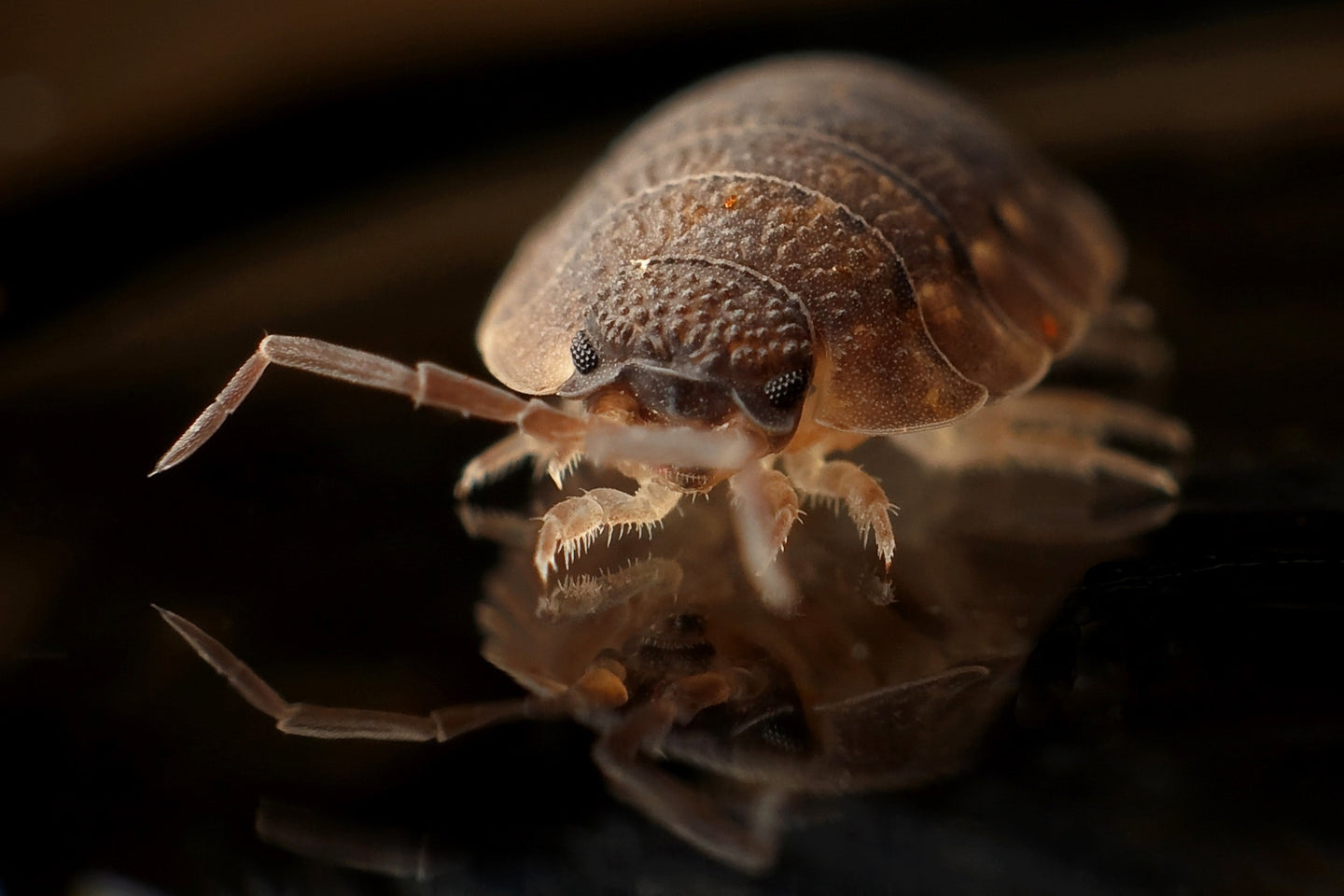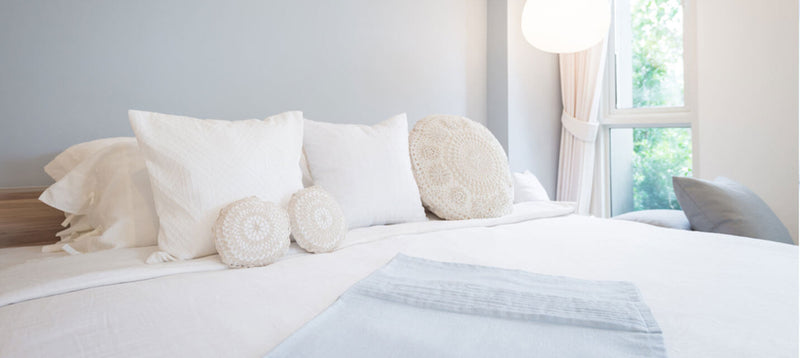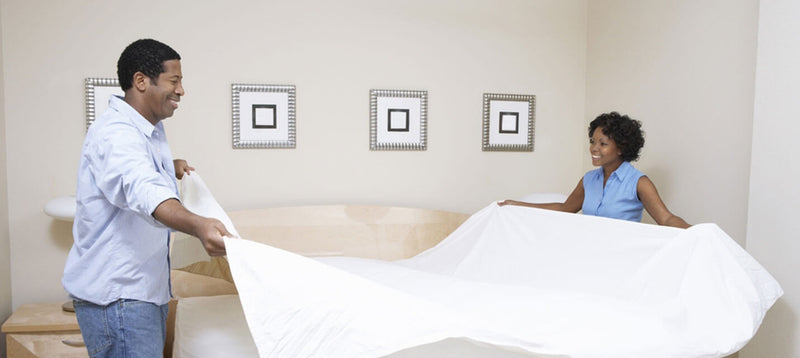Home Treatment for Bedbugs: 5 DIY Solutions
February 28, 2022
Author: josiel
No matter where you live or what kind of home you have, chances are that you’ll have to deal with the occasional pest. Mice, ants, cockroaches — each one is a visible reminder that the outside world doesn’t always stay outside. But what about those pests that aren’t as visible?
Bedbugs (the common name for the species Cimex lectularius) aren’t the kinds of pests that you’re likely to notice skittering across the kitchen floor. But just because you probably don’t see them, it doesn’t necessarily mean that they can’t be a major annoyance. These small, flat, parasitic insects tend to keep well out of sight during the day. But when the lights go out and the household goes to sleep, bedbugs come out to feed. And unfortunately, their favorite meal is you.
What Do Bedbugs Look Like?
Bedbugs are a growing problem in developed countries, and are seeing increased spread throughout North America, Europe, Australia, and Asia. As previously mentioned, bedbugs are small and flat — about the size and shape of an apple seed, though some adults may grow larger. In coloring, they range from a rusty brown to a deeper crimson, depending on how recently they’ve fed (yuck).
Like all insects, bedbugs have six legs. They also have two prominent antennae near their heads. Bedbugs do not have wings, and do not jump. They can crawl relatively fast for their size, however, covering as much as four feet in under a minute. That’s pretty fast for something smaller than a penny.
Although bedbugs are certainly small, they aren’t so small that you can’t see them with the naked eye. Still, because they tend to hide in out-of-the-way crevices whenever they’re not feeding, you’ll probably discover other signs of bedbugs before you ever actually see the pest itself.
How Do Bedbugs Spread?
As with any kind of infestation, bedbugs usually spread from other infested areas. This can be as simple as hitching a free ride on clothing, in purses or luggage, or in second-hand furniture. Shared laundry facilities can be a hub for bedbugs to spread from home to home.
It’s worth noting that bedbugs can be found in hotel rooms of all kinds, from cheap hostels, to five-star accommodations. These pests may also burrow down into furniture found in public places, including seats on public transportation.
In other words, there are a lot of ways to bring bedbugs home.
Signs of a Bedbug Infestation
The good news is that it’s usually not difficult to spot a bedbug infestation, provided that you know what to look for. Often, the most-obvious clue is that you or others in your family are waking up with small, itchy welts or hives. Similar to what you might get from a mosquito, these may be bites from bedbugs. And, because bedbug saliva contains a potent painkiller, chances are you aren’t even feeling these bites until you start scratching them the next day.
Other indicators that you may have bedbugs include small rust-colored spots on your sheets. These are likely tiny bloodstains, either from the bedbug’s excrement or the bites themselves. Also, you may discover dead bedbugs, shed carapaces, or eggs (small, pearl-colored, and about the size of a grain of salt). Also, keep in mind that bedbugs don’t always live in mattresses; bedbugs are more than willing to travel to get a good meal, and they can be found in box springs, electrical outlets, in drawer joints, and just about anywhere else that’s dark and out of the way.
Infestations may also be accompanied by a musky odor. The specific smell is often described as smelling slightly sweet, like cilantro or berries. Larger infestations have a more intense odor, similar to dirty shoes, moldy laundry, or rust. Some dogs have actually been trained to sniff out bedbugs, which they do with an extremely high degree of accuracy.
Bedbugs are a growing problem in developed countries, and are seeing increased spread throughout North America, Europe, Australia, and Asia.
Home Treatment for Bedbugs: 5 DIY Solutions
If you’ve got a major bedbug infestation, then your best option may be to call an exterminator. Professional pest control specialists understand bedbug biology and behavior, and are trained to take a strategic approach to dealing with the infestation. Simply put, exterminators know how to get rid of bedbugs for good; they should be able to provide a thorough service designed to completely eliminate the threat of bedbugs in your home.
That said, exterminators can bring with them a hefty bill for their services, and during certain seasons, their limited availability may mean having to wait days or even weeks to get someone to come take care of the problem. At the same time, exterminators often employ insecticides and pesticides, which may pose health risks for humans and pets living in the home.
If you’re looking for a solution for bedbugs that doesn’t involve calling in an expert, we’ve collected Five DIY tactics for you to consider:
- Vacuuming and Brushing
- Mattress bags
- Temperature
- Washing Bedding
- Diatomaceous Earth
A thorough vacuuming of all infected areas may be your best DIY option. Just remember that we do mean thorough. If you fail to pick up even a few bedbugs, then you’ll just be looking at another infestation in the near future.
As much as possible, disassemble any and all furniture that may be housing the pests. Use a powerful vacuum hose attachment to get into crevices and harder-to-reach areas. Run a stiff brush over mattresses and upholstered furniture to loosen any eggs that might be holding on. And then, once you’ve vacuumed everything up, remove the vacuum bag and discard it in a secure outside garbage bin. And then do the whole thing over again every few days until you can be sure that the infestation has been eradicated.
If you can be sure that the infestation is limited to your mattress, then you can always try starving the bedbugs to death. Purchase a large, heavy-duty mattress bag and place it around your mattress.
You’ll need to make sure that the bag can be closed securely, without any small openings or holes for the bedbugs to escape through. Assuming that the bag is fully secure, and if you don’t mind waiting (and we do mean waiting; bedbugs can live for months without feeding), then you should be able to kill them off. You can potentially speed this process by placing the mattress in a very hot or cold area, as bedbugs are exothermic and cannot self regulate their body temperatures. In any case, you keep the mattress fully encased in the sealed cover for at least one year to help ensure that all of the bugs and their eggs are dead.
As mentioned above, bedbugs don’t like it hot, and they don’t like it cold. You can weaponize this weakness to temperature a number of different ways. Steam cleaning infested furniture, or even blasting a hairdryer directly into known bedbug haunts, can help bring the heat to areas full of the pests and their eggs. Alternatively, smaller items (such as pillows or duvets) can be placed in a freezer for several days to kill any bedbugs that might be burrowed down into the fabric.
Unfortunately, while these kinds of spot-temperature solutions are effective at helping curtail the number of bedbugs in your home, they usually can’t reach all of the infected areas, and are thus not an effective one-and-done approach. On the other hand, temperature can be used in conjunction with other DIY solutions, for a more-complete strategy.
Regularly washing your bedding — at least once every one or two weeks — can help prevent bedbug infestations from fully taking root in the first place. The heat from the washing machine, followed by even more heat from the dryer, is effective at killing bugs and eggs.
If an infestation has already taken root, then washing the bedding may not be quite enough. Bedbugs spread, and a lot of their favorite hiding places can’t really be thrown into the wash. Still, washing your sheets, pillowcases, duvets, etc. can put a major dent in the bedbug population in your home. You just may need to take other steps too.
Diatomaceous earth is a kind of sand that has long been used as an effective home remedy against insects. Although it feels like a chalky, fine powder, diatomaceous earth is actually made up of tiny, jagged fossilized remains of aquatic organisms called diatoms. When bedbugs attempt to crawl over diatomaceous earth, it tears through their soft exoskeletons. At the same time, diatomaceous earth is naturally water absorbent, dehydrating areas where bedbugs live and killing the pests outright.
The downside of diatomaceous earth is that it may be harmful if inhaled. Only use small amounts, keep it out of reach of pets and children, wear a face mask and gloves when sprinkling it on problem areas, and be sure to vacuum up any remaining diatomaceous earth once it’s done its job. Another drawback is that it works slowly, so you may have to leave it in place for up to a week before you start finding any dead bedbugs.
Don’t Let the Bedbugs Bite
Having a bedbug infestation is something that no one wants to experience. But if you start noticing bites, stains, smells, and other telltale signs of bedbugs, there are steps that you can take to resolve the problem. These tried and true bedbug home treatments can help you send those blood-thieving pests packing.
Bed bugs got you itching for a new mattress? Check out the Serta Mattress lineup.


